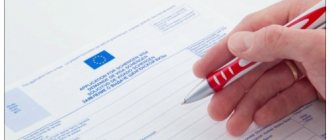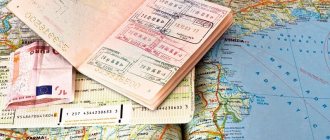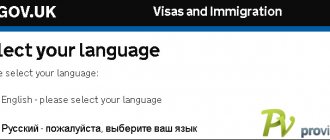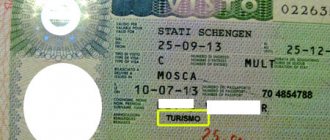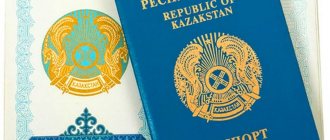How to fill out a Schengen application form? This is the question asked by people receiving a visa for the first time. To ensure that the embassy does not refuse to accept your application, provide a complete package of documents. Do not make mistakes when filling out, otherwise consular officers will return the papers.
The information in the application form must be reliable, relevant, and consistent with the documents presented. Otherwise you will not receive a visa. To avoid such consequences, read the rules and recommendations for completing the application form, but before that, find out what a Schengen visa provides.
Benefits of a Schengen visa
If you have a Schengen visa, a person can freely travel to the Schengen zone - the territory of 26 countries (22 EU members, 4 EFTA members). These states have signed an agreement according to which Schengen persons can move freely within their state borders. To get this opportunity, citizens apply for a standard visa by contacting the consulate of one of 26 countries. If the embassy staff approves the application and issues a visa document, the person will be able to stay in the Schengen area for 90 days (within 6 months). This is a general rule that can be supplemented depending on the visa category, which has 4 options: A, B, C, D. The last type is a national visa, and tourists mainly receive Schengen type C.
Types and categories of German visas
There are several types of national visas for staying in Germany. They differ in terms of validity, as well as the purpose of stay in the country. Each type of visa differs not only in the time it takes to be allowed to stay in the country, but also in its validity period. If a person is approved for a tourist visa, then he has the right to stay in Germany for 90 days within six months.
But the visa itself is valid for a year. This means that the traveler can use the visa at any time.
A
This is a transit, or rather an airport document for visiting the airport area within 24 hours. It is necessary if you need to change planes in Germany. It is easier to obtain than the others, but you cannot visit Germany with such a document, it is just a pass to the airport.
Category B
This is a transit document with permission to move around the country for 5 days. It is issued if you need to leave the airport area to transfer to another type of transport. To receive it, the applicant must provide tickets for another type of transport and confirmation of a hotel reservation. The last condition is necessary if the traveler plans to stay in Germany for more than a day.
Category C
This is a tourist visa, but can be obtained for a variety of purposes, including meeting relatives, business travel, study and work.
There are several types of national visas
There are several types of visa C depending on the length of stay in the country:
- C1 – no more than a month;
- C2 - no more than 90 days, and the visa is valid for six months;
- C3 – stay for 90 days, and is valid for a year;
- C4 has the same duration of stay, valid for 5 years.
In any case, you will not be able to live in Germany for more than 90 months on such a visa.
Category D
This is a national visa and is issued if you need to stay in Germany for a long time: study, work. The period of stay in the country according to such a document is up to 5 years.
Design features
The application form for a Schengen visa 2021 includes 37 points and is drawn up on 4 A4 sheets, the last of which is devoted to confirming the accuracy of the previously specified information. The applicant also confirms his consent to the further use of personal information by other persons (consular officers). Don’t rush to fill out the form right now, read these recommendations - they will help you avoid mistakes:
- Be careful when filling out your application. For completeness, first read the guide to applying for Schengen yourself in Moscow (but this also applies to other cities in general).
- Write in Latin letters.
- Choose a language from the available ones: in European countries, it is common practice to prepare documents in English or the state language.
- Write legibly - in printed font - and fill out the form with a ballpoint pen. If your handwriting is not important, you can download the PDF file of the application form and fill it out on your computer.
- Please provide up-to-date information that can be supported by accompanying documents.
Tell us about yourself in German
When writing a story about yourself in German, use the proposed plan.
Usually, when talking about yourself, they say their name, age, where the person is from, profession, marital status, hobbies... Almost all these topics have already been touched upon by me in this blog. Therefore, I will send you to the right places.
So, …
1 . The first thing we do when talking about ourselves is greeting and introducing ourselves.
Hello! Mein Name ist... - Hello! My name is... This is the simplest phrase to start with. Some say their last name, others just their first name. It all depends on the situation and place.
You can go deeper into this point, make your story about yourself in German longer and more non-standard - you can say your maiden name, the name by which your loved ones call you, or say that you were named after your grandmother. You will find all these subtleties in the article: What is your name in German.
2. Some people, when talking about themselves, indicate their age or even date of birth.
Ich bin 30 Jahre alt. - I am 30 years old. This is a standard and easy phrase.
Ich bin 1990 geboren. — I was born in 1990.
If you DO NOT want to give away your true age, you can use the following combinations: “my age is approaching 30,” or the flirtatious: “I’m already an adult.” These sentences in German are in my article: About age in German.
3. Where are you from and where do you live?
Ich komme aus Polen. — I am originally from Poland.
Meine Heimat ist Russland, weil meine ganze Familie aus Russland stammt und ich dort aufgewachsen bin. Aber ich lebe schon seit fünf Jahren in Köln. Die Stadt ist meine zweite Heimat geworden. — My homeland is Russia, because my whole family is from there, and I grew up there. But I’ve been living in Cologne for five years. This city has become my second home.
Ich bin meiner Herkunft Russe. — I am Russian by origin.
Ich wohne in einem Dorf bei Frankfurt. In meinem Ort wohnen nur 5000 Menschen. — I live in a village near Frankfurt. Only 5,000 people live there.
You can mention where exactly you were born:
Ich bin in Moskau geboren. - I was born in Moscow.
If in the second paragraph (about age) you already mentioned when you were born, you can also talk about the place there, so as not to repeat yourself...
4. Next you should mention your family. Also, are you married, married, engaged? These phrases are already available on the blog, namely in the article “Family in German”.
And also indicate who you live with: parents, children, grandmother, friend... You can also tell a little about how many brothers and sisters you have, what profession your husband/wife/parents are. It is especially worth talking about your profession if you followed in the footsteps of one of your relatives - see the example at the end of the note.
Ich bin verheiratet und habe 2 Kinder, eine Tochter und einen Sohn. — I am married and I have two children: a son and a daughter.
Mein Vater ist Arzt von Beruf, und meine Mutter ist Hausfrau. — My father is a doctor by profession, my mother is a housewife.
Tell us about yourself in German: profession, hobbies, knowledge of languages
5. The fifth point can be about your profession or where you study and who you will become.
Ich bin... von Beruf. - My profession is...
A list of professions can be found here. And there you can find useful phrases for this point: for example, you can say that you have shift work, or a flexible schedule, or (God forbid!) your position was reduced and now you are looking for a new opportunity.
About studying:
Ich studiere eine Kombination aus zwei Fächern: Germanistik und Soziologie. — I study a combination of two subjects - German and sociology.
Ich mache seit ein Jahr Ausbildung beim Frisör. — I’ve been training with a hairdresser for a year now.
Ich wäre gern ein berühmter Wissenschaftler. — I would like to become a famous scientist.
6. Don't forget to tell us about your hobby. What do you like to do in your spare time? This will be very interesting to everyone listening. Do you like to read, solve crossword puzzles, swim, and maybe skydive? Take a look at the article “Hobbies in German” and get useful ideas for this item from there.
Ich gehe oft zu klassischen Konzerten. Ich interessiere mich sehr für klassische Musik. — I often go to classical concerts. I'm interested in classical music.
If you don't have a favorite hobby, then tell us about your favorite holiday, favorite dish, or favorite pet.
Mein Lieblingsfest ist Silvester. — My favorite holiday is New Year. (List of holidays in German can be found HERE)
7. If you prepared this story about yourself for a German lesson, then why not mention your language abilities. For example like this:
Ich lerne seit zwei Jahren Deutsch. Mein Niveau ist jetzt viel besser als am Anfang. — I’ve been studying German for two years. My level today is much better than at the beginning.
Ich spreche Russisch, Deutsch und ein bisschen Japanisch. — I speak Russian, German and a little Japanese.
Well, or some other phrases found HERE!
8. In a story about yourself, you can write several definitions that characterize you.
Ich bin offen und hilfsbereit. — I am an open person and ready to help.
Meine Freunde schätzen an mir, dass ich mit jedermann locker ein Gespräch anfangen kann. — My friends appreciate in me that I can calmly start a conversation with anyone.
Was mich auszeichnet ist mein Sinn von Humor. — What characterizes me is my sense of humor.
9. Concluding the story about yourself in German, you can say:
Das ist alles was ich über mich erzählen wollte. “That’s all I wanted to tell you about myself.”
Soviel dazu. - This is all.
Es wäre alles dazu. - I guess that's all.
Danke für die Aufmerksamkeit. - Thank you for your attention.
Telling a story about yourself in German: an example with translation
Hello! Mein Name is Michael. Ich trage den Namen meines Großaters. - Hello, my name is Mikhail. I am named after my grandfather.
Ich bin fast 21 Jahre alt. Morgen habe ich Geburtstag. — I’m almost 21 years old. Tomorrow is my birthday.
Ich bin in Kasachstan geboren, aber mit 15 Jahren nach Russland gekommen. — I was born in Kazakhstan, but at the age of 15 I came to Russia.
Ich wohne mit meinen Eltern. - I live with my parents.
Mein Vater ist Koch von Beruf und ich lerne das Gleiche wie er. Ich mache die Lehre in einem kleinen Restaurant, aber später möchte ich in ein großes Hotel wechseln. — My father is a cook by profession, and I am also learning to do it. Right now I am training in a small restaurant, but later I want to work in a big hotel.
In meiner Freizeit gehe ich ins Kino oder treffe mich mit Freunden. — In my free time, I go to the cinema or meet with my friends.
Das ist alles für heute. Danke für die Aufmerksamkeit. - That's all for today. Thank you for your attention.
I also recommend watching:
Climb in German
Description of the book in German
Collect in German
Feelings and emotions in German
Step-by-step instructions for filling out the visa application form
Below is a manual for completing the application form for any European Schengen application form. Which specific country to choose is up to you to decide - based on the length of stay or the ease of registration. The number of each item in our instructions is equal to the item number in the questionnaire:
- Write your last name in Latin. In order not to make mistakes in writing, take your international passport as a basis - write exactly the same.
- The information in the second paragraph is indicated only by those persons who previously changed their last name. If she was different at birth, enter the old data. Attach a document confirming the changes. If the data has changed due to marriage or marriage, you cannot do without a marriage certificate. If there are no changes, skip the item.
- The name, like the surname, is written in Latin. Look at your foreign passport.
- The date of birth is indicated in digital form day/month/year.
- Indicate the city where you were born.
- The country of birth is selected according to the rules of the consulate you are applying to. For example, Germany requires that the USSR (USSR) be written in this column if the person was born before the collapse of the Soviet Union.
- Please indicate your current citizenship. If they changed it, then so did the citizenship acquired at the time of birth.
- Select gender.
- Indicate your marital status as follows: indicate if you are single, officially married, separated, or divorced. If none of the options are suitable, select the last option - “other”.
- When the form is filled out by a minor citizen, this paragraph indicates the information of any parent or legal representative. We are talking about first name, last name and address. The latter is required if it does not match the applicant’s address.
- The identification code is indicated if available. It may be absent - this is normal.
- Select the document you are traveling on. This is either one of the types of passport (regular, diplomatic, service, official, special), or something else. Ordinary citizens choose the “regular passport” option.
- Enter your passport details. Consulate employees are interested in the number and series.
- In continuation of the previous paragraph - the date when the document was issued. It is written in digital form (day/month/year), separated by dots.
- Enter the date after which the passport is considered invalid.
- Indicate the country where you received your passport.
- Provide contact information in the form of home address, email (if available). The field on the right is reserved for the mobile number.
- If you have a residence permit or other document according to which you can live permanently in a Schengen country, indicate the type, number, and expiration date of the permit.
- Please indicate your position. The data is confirmed by a certificate from work, so the information should be similar. If you are unemployed, skip this step. If you are studying at a college or university, write in the student column. Retired people indicate that they are pensioners using the word pensioner. The status of an entrepreneur corresponds to the position of self-employed. If a person is a military serviceman, then he writes soldier.
- Provide the embassy staff with your work address. If you are a student, then the location of the educational institution.
- Select the reason for your trip by marking it with a cross. Travel may be related to tourism or a work issue. Typically, people obtain Schengen to visit relatives and friends, attend a cultural or sporting event, or attend an official visit. Other reasons include: treatment and study in a Schengen country, transit, airport transit zone and more. The last point requires you to independently indicate the type of trip.
- Indicate the countries you plan to visit during your trip.
- Choose the state where you will go first. If you are flying through a Schengen country (planning a transfer), choose the one in which the airport is located. For more detailed information, go to our article about the country of first entry.
- Indicate the number of entries - depending on this, a single, double, or multiple entry visa is issued.
- Write the amount of days you want to spend in Schengen.
- If you have applied for the same visa over the past 3 years, enter the start and end date of its validity. When issuing several documents, write information about the last one.
- If biometric data was submitted when receiving previous visas, make a note about this next to the date.
- If you want to cross the Schengen zone to get to a third country, you need to have permission to visit the latter country. Indicate the details of the permit (who issued it and when, until what date is it valid).
- Enter the date when you plan to enter the Schengen country.
- Now the same thing, but with the departure date. You need to confirm your stay by booking a hotel, inn, hostel or rental property.
- Provide the personal details of the person inviting you to Schengen. If this is not a visit to friends or relatives, then leave the contact information of the hotel or hostel where you booked the room.
- If the reason for applying for a visa is a business trip, you need to have an invitation from the company, valid in Schengen. Indicate the name/name, contacts of the person/organization that invited you abroad. If you are going to a specific company, provide the first name, last name, address, email, telephone number of the person from this company. Enter the data in the cell next to it.
- Choose who will cover expenses for the entire trip. This is done by you or the person who invited you. Please indicate your payment method. You can pay with cash, credit card, traveler's checks, have housing and transportation already paid for. There is also another option.
- If you are traveling to Schengen to visit relatives, please provide their details. In addition to the standard information (first name, last name, date of birth and citizenship), enter the person’s identification card number.
- Select the degree of relationship. Indicate who is calling you to the Schengen territory: spouse, son or daughter, grandchildren or other relative.
- Write the city where the document is being filled out and the date.
- The last cell is for personal signature. When the application form is submitted by a person who has not reached the age of majority, the document is signed by the parent (legal representative).
Rules and instructions for filling out
The application form for a national visa to Germany requires careful completion, since any inaccuracies will lead to refusal of issue. To submit documents, you must contact the German consulate or embassy. You should be prepared for the fact that obtaining a national document is a very long and troublesome process. And filling out the questionnaire is one of the important steps that must be taken carefully.
Important! The form must be filled out in German.
Personal Information
From the first to the fourth points of the questionnaire there are personal data. These include:
- FULL NAME;
- Date of Birth;
- the place where the applicant was born.
This information is filled out strictly as in the international passport. Here you must indicate your citizenship. If the applicant is a resident of several countries, then it is necessary to indicate all available citizenships.
The application form for a national visa to Germany requires careful completion.
Spouse details
Points 6 and 7 - indication of marital status. If there was a change of surname during marriage, this should also be indicated.
Children's data
If there are no children, then write keine in the line. If you have children, provide information about them.
Parent data
Points 9 and 10. If the mother changed her last name upon marriage, then it is important to indicate both last names with a hyphen.
Previous stays in Germany
You need to select the line yes or no. If you have been to Germany before, you need to indicate the date and city of stay.
Planned place of stay
This is item 15 of the questionnaire and it has two options for filling out. You can write the address where the visa applicant will live, or you can indicate a contact person who will help with finding housing upon arrival. When specifying a contact person, be sure to include his address in Germany.
Housing outside Germany
It is necessary to confirm in this line that the person has housing outside Germany, and it remains for the duration of his stay in Germany. Be sure to indicate your registration address in the Russian Federation.
One of the important steps is filling out the form
Family members planning to enter with the applicant
Whether the traveler is traveling alone or traveling with family members, the inappropriate answer must be crossed out here.
Purpose of stay
If the purpose of stay is work, then it is further necessary to clarify what profession the applicant studied, whether there is a work permit, as well as the address of the employer.
Estimated length of stay
This should be a period no longer than that which will be allowed on the visa. This is 6 months.
Livelihood
This could be a bank account number, guarantees from relatives, passive income. All sources must be cited.
Having a criminal record
Just cross out the option you don't need.
Previous failures
If an applicant has ever applied for a visa and was refused, then this must be indicated in this paragraph.
A very long and troublesome process - obtaining a visa
Presence of diseases
In this paragraph, the applicant indicates the presence of chronic diseases, if any. Also indicate the availability of insurance, which will be valid throughout the territory of Germany during the applicant’s stay.
Then put the date of completion and signature.
Photo and printing
The photo in the application form must be biometric. To the right of the photo, you should cross out everything that is unnecessary, except “I am requesting a visa for 6 months.”
Electronic form of the questionnaire
It is possible to fill out the Schengen visa application online. This option is available at many visa centers and most consulates. When submitting your application online, there are some things to keep in mind that do not apply to the paper version.
Here are some simple tips to help you avoid mistakes:
- Choose language. The online system will provide available options, and it is not a fact that there will be English. For example, when contacting a German mission, you can fill out the form in German and Russian. There are no other options, so choose the language that suits you best.
- Complete each field. If you accidentally skip a line, sending the form will not be possible. The server blocks this feature, but at the same time notifies you of empty fields. Until you enter the information, the next step is not available.
- Complete the form promptly. There is no need to rush, and there is no need to hesitate. If you spend a lot of time filling out a document, the server will update the data and delete the information - as a result, a couple of hours of work will go down the drain. Don’t waste your time, don’t do the same thing twice, each stage of filling out the form should end with saving the data.
It doesn’t end with sending the document, although the questionnaire is submitted for review after it is sent. Print the completed document. The form must have a bar code and a bar code - check. If everything is in order, certify the authenticity of the data with a signature, which is placed in several places. Submit the application form to the consulate in the package of documents.
You can fill out a Schengen application form electronically if you receive a Norwegian or Finnish visa, contact the Italian or Estonian embassy, or are traveling to Slovakia, Switzerland or Liechtenstein. This opportunity is also available to those who apply for a visa to Latvia and Lithuania, Greece and Germany.
Applying for a national visa online
Filling out Schengen forms has long been practiced through the websites of visa centers. However, a similar service for national visas is just being introduced.
For this purpose, the German government has developed the VIDEX system, but not everyone can use it yet. For example, Russians can fill out a form using this link, using the data from this memo from the German Embassy. However, for now, the embassy’s website contains a request to use this option as an additional option, still using manual filling.
Unfortunately, the language selection form does not yet have Ukrainian (and the form must be in German and the state language), so this function is currently not available for Ukrainian citizens.
Sooner or later the system will work in full. One of the indirect signals will be the appearance of the Ukrainian language in the choice.
Application form samples
To obtain a form in the prescribed form, contact the consulate in person or visit the official website of the embassy. Contact representatives of the country where you are going to travel. Typically, sample forms are available at visa centers. Here, for example, is a sample of a completed Schengen application form at the Spanish Consulate:
When looking for an example, always start from the one whose embassy you are contacting. Especially for our readers, we post PDF files of examples of filling out forms for the following countries:
- Application form for a Schengen visa to Spain
- The application form for Schengen Germany is filled out online on the official website, instructions for it are also located there
- Application form for a Schengen visa for Italy
Chapter I. Personal data
Section “Personal data of the applicant”
- “Last name” - it is necessary to indicate the applicant’s surname in exact accordance with the passport or other travel document. Entering numbers in the field is not allowed.
- “Last name at birth” - women should pay attention to this point: if the surname changed during marriage, it must be indicated in accordance with the birth certificate.
- “Name/names” – entered in accordance with the foreign passport. If it has changed during your life, you must indicate all previously existing names.
- “Date of Birth” – entered in the format DD/MM/YYYY. If you specify the date of birth of a minor child, a new tab “Parents (or person with parental/guardian rights)” will appear in the system.
- “Place of birth” - enter data in strict accordance with the passport.
- “Country of birth”—you are asked to select a country from the list.
- “Gender”—select from the list.
- “Marital status”—specify a list item. If the child is under 18 years of age, this item must also be completed.
- “Current citizenship” - select from the list. If the applicant has several citizenships, all are indicated.
- “Initial citizenship” - to be filled in in case of a change of citizenship. If the applicant was born in the USSR, then do not indicate anything in this paragraph.
Application form for a visa to Bulgaria in 2018
Filling out personal data in the form
If the applicant is a family member of EU and EEA or Swiss citizens, the appropriate box must be checked.
A sample of filling out the section of the application form for visas to Germany in 2021 is presented in Fig. 1.
Section “Parents (or a person with parental/guardianship rights)”
This section must be completed by parents or legal guardians when applying for a visa for a minor child.
You must specify:
- surname of father and mother;
- name/names of father and mother;
- citizenship of father and mother;
- actual residential address of the parents or legal guardian.
Section "Profession"
“Current work activity” - you must select the appropriate value from those proposed by the system. For a working person, you should choose a suitable position. Housewives and preschool children indicate “No profession.” Students and schoolchildren - “Student, intern”, elderly people - “Pensioner”.
Working citizens indicate information from a certificate of employment in the next field. The name of the company and its legal form are indicated in Latin letters. For example, PJSC - PAO, Federal State Unitary Enterprise - FGUP, VNIIA - VNIIA. The phone number is written in full, with the country and city code. The address of the organization is taken from the certificate (or legal).
Filling out job details
Conclusion
Now you know how to fill out the Schengen visa application. The response from the consulate depends on the correctness of the document. Do not make even minor mistakes so as not to be rejected. Competent filling will protect you from returning documents and delays in processing your application.
Step-by-step instructions and current rules for filling out the questionnaire will help you cope with the task.
But before entering personal information into the form, choose the method of submitting the document: paper and electronic version. We hope that our article was useful to you, and if so, we ask you to share the link to it with your friends. We wish you to receive a 5-year Schengen visa and go on many pleasant trips! What else do you need for travel and where to find, buy or order it :
Don’t forget to take out coronavirus insurance
And also check out our article about the best online guided tours
- Read how to cheaply get to the city center from Russian airports: Domodedovo, Sheremetyevo, Vnukovo, Pulkovo, Koltsovo and many others.
- Buy cheap air tickets on AviaSales.Ru Or buy a Russian Railways train ticket through the Tutu.Ru
- Or buy an “all inclusive” tour on the OnlineTours
New articles on our website
- The most interesting places on the MCD-2 route.
- We wrote about the Space Conquerors Park named after. Yuri Gagarin
- We calculated how much a spring vacation in Russia costs in 2021 .
- We updated the article about which countries are open for departure from Russia
- We traveled all over the Moscow region in search of the most interesting abandoned buildings .
- We have added information on where to urgently take a PCR test at Moscow airports .
- And then they wrote 7 ways to catch the cheapest train ticket.
- We went to Yasnaya Polyana and told you how to get there .
Common Mistakes
The Germans are very meticulous in terms of documents. Therefore, when filling out you need to be as careful as possible. If you do not have proper knowledge of the German language, you can turn to specialists. There are various agencies that will explain how to fill out an application for a national visa to Germany. Experts will help you avoid the most common mistakes.
The first thing to avoid is providing false data. Embassy employees will still check and if any discrepancies are found, the visa will be denied. However, the reason for the refusal is not officially reported.
You cannot submit all documents through intermediaries; you must appear in person at the embassy.
Printing the form
After all sections of the form have been successfully completed, you must print it and sign it. By clicking on the “Next” button, the user will be asked to save the questionnaire for further printing.
Important! By saving the questionnaire in PDF format, it will not be available for further editing. By choosing to save the questionnaire in .json format, the user can change its data.
After this, you should download the draft questionnaire, print it and check that all sections are filled out correctly. Next, you should personally sign the document format in blue or black ink on pages 5, 6 and 7 and submit it to the visa center with a complete set of documents.
The application can be considered from 5 to 10 days, but this period is a minimum. Most often, the process of issuing a visa permit takes 2-3 weeks.


